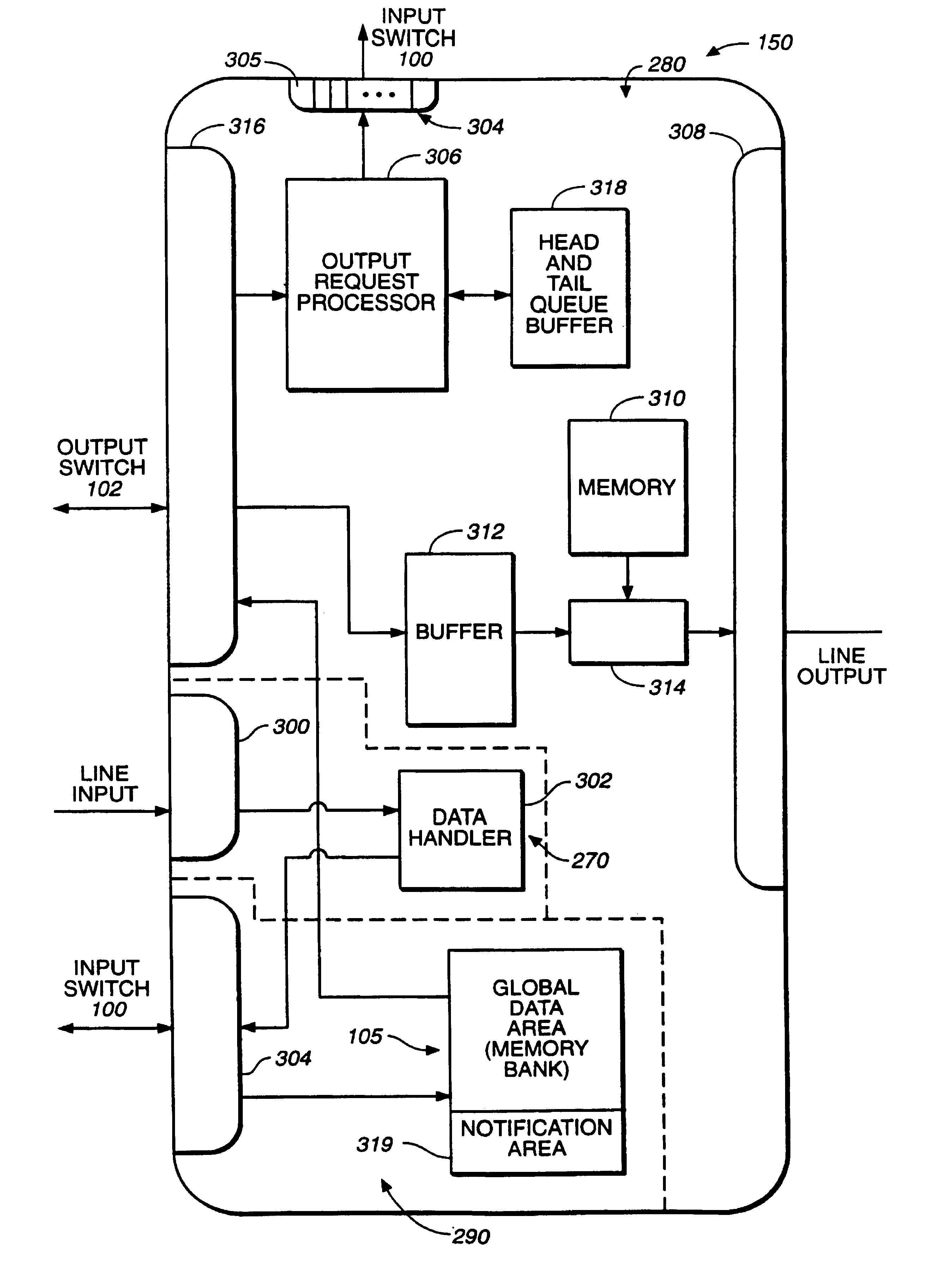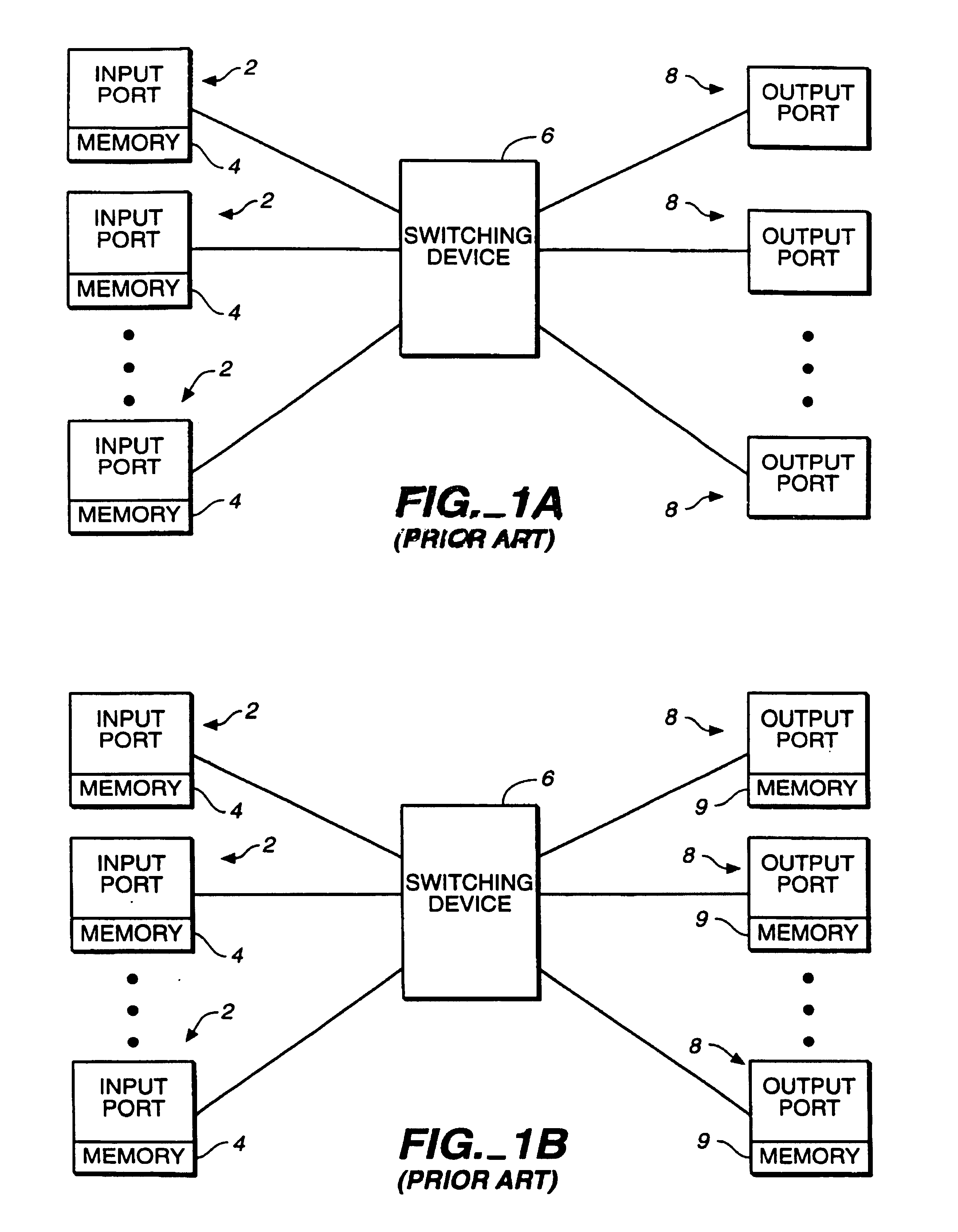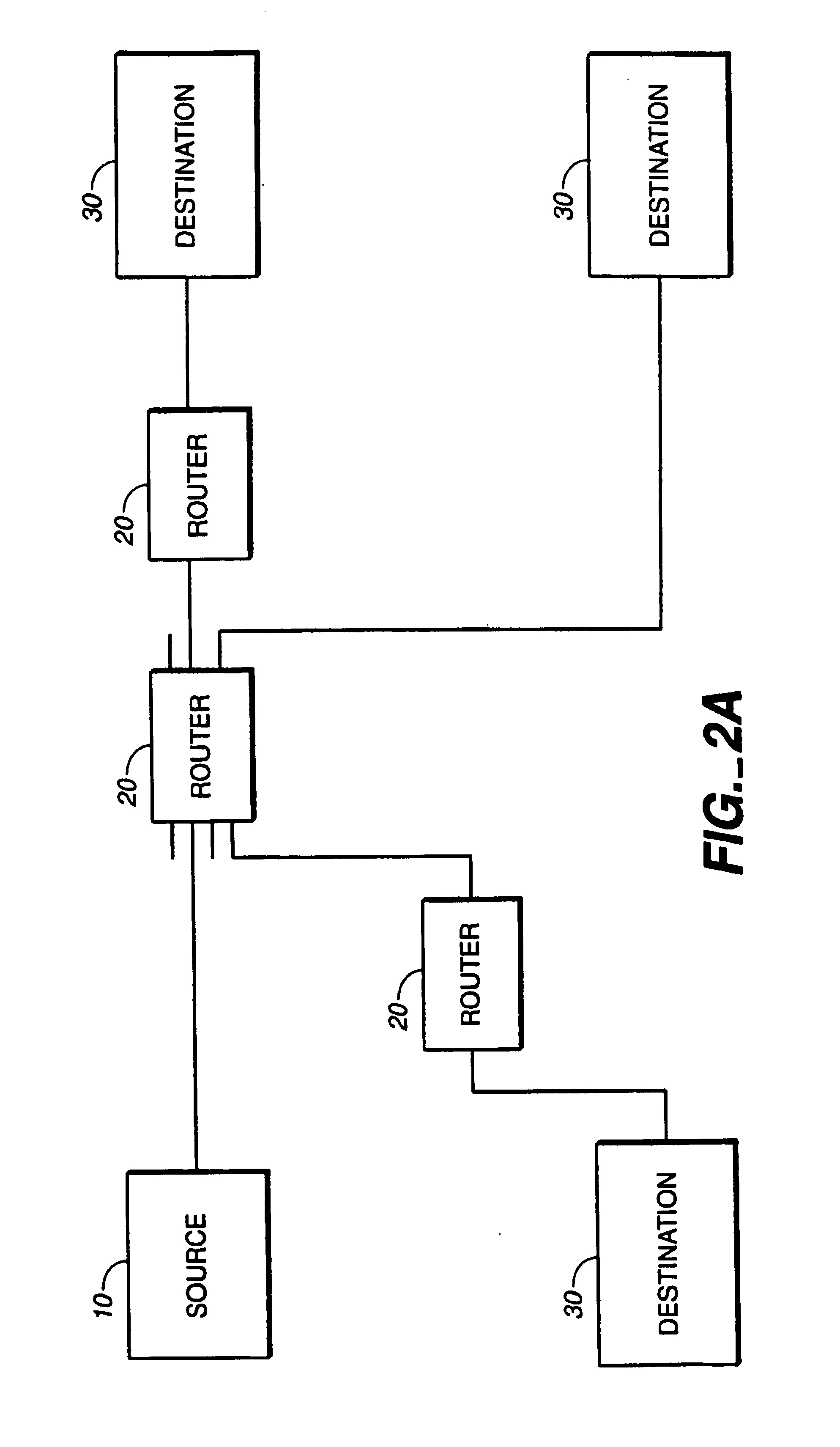Separation of data and control in a switching device
a switching device and data control technology, applied in data switching networks, instruments, digital computer details, etc., can solve the problems of inefficiency of conventional routers in a number of respects, design trade-offs (costs), and inability to connect in the switch, so as to reduce the occurrence of dropping packets, reduce the size of the output buffer, and reduce the effect of dropping packets
- Summary
- Abstract
- Description
- Claims
- Application Information
AI Technical Summary
Benefits of technology
Problems solved by technology
Method used
Image
Examples
Embodiment Construction
[0065]Referring to FIG. 2A, in a packet switching system, a source 10 is connected to one or more routers 20 for transmitting packets to one or more destinations 30. Each router includes a plurality of multi-function multiports that are connected to various sources and destinations. A packet from source 10 may pass through more than one router 20 prior to arriving at its destination.
[0066]Referring to FIG. 2B, each router 20 includes an input switch 100, an output switch 102, a global data buffer 104 including one or more memory banks 105, a controller 106 and a plurality of multi-function multiports 150 (150-0 through 150-3), respectively. Associated with the controller 106 is controller memory 109 for storing a routing table. Input switch 100 and output switch 102 are connected to each multi-function multiport 150 in router 20. In one embodiment, router 20 includes plug-and-play multi-function multiports which allows for easy expansion capability. The present invention will be des...
PUM
 Login to View More
Login to View More Abstract
Description
Claims
Application Information
 Login to View More
Login to View More - R&D
- Intellectual Property
- Life Sciences
- Materials
- Tech Scout
- Unparalleled Data Quality
- Higher Quality Content
- 60% Fewer Hallucinations
Browse by: Latest US Patents, China's latest patents, Technical Efficacy Thesaurus, Application Domain, Technology Topic, Popular Technical Reports.
© 2025 PatSnap. All rights reserved.Legal|Privacy policy|Modern Slavery Act Transparency Statement|Sitemap|About US| Contact US: help@patsnap.com



